
ABOUT
IMAGES
CALENDAR
VIA CRUCIS/The Way of the Cross by André Collot
For centuries the Stations of the Cross have been a popular form of devotion practiced by Christians, especially during Lent in preparation for Easter. The popularity of this devotion was the catalyst for some of the greatest medieval Christian art and still inspires artists to find new ways to envision Jesus’ journey to the cross. This exhibition, Via Crucis, hopes to offer André Collot’s Way of the Cross etchings from the mid-twentieth century as a way to see anew these familiar scenes.
André Collot (1897 – 1976) was a French artist who was known as a painter and illustrator of over one hundred books. His 1948 Way of the Cross included a series of 14 etchings on heavy hand-torn laid paper that were printed on the right side of a double sheet of paper with a woodcut and text relating to the stations of the Cross on the cover page. To preserve its original format, this exhibition only displays the etchings. Also included are nine first state images which reveal the artist’s process
The Stations of the Cross originated during the Crusades when Christians took pilgrimages to Jerusalem. They wanted to reproduce the Way of the Cross…the route that Jesus walked from Pontius Pilate’s praetorium to Christ’s tomb after his crucifixion. In the 16th century this pathway was officially entitled the Via Dolorosa, or Sorrowful Way.
The Stations of the Cross have evolved over time. When Constantine legalized Christianity in 313 AD various points on the Jerusalem pathway were marked. We know from St. Jerome’s writings that he witnessed crowds of pilgrims following the Way of the Cross. In the 17th century the Franciscans were appointed by the pope to be guardians of the shrines of the Holy Lands, including the Stations of the Cross. When the Moslem Turks forbade entrance to the Holy Land in the early 16th century, stations began to appear at various spiritual centers throughout the Christian world. Devotional books in the Low Country (Netherlands) included the fourteen stations of the cross along with prayers to be recited at each stop. To enrich the lives of parishioners Pope Benedict XIV, in the 18th century, encouraged priests to install fourteen crosses along with pictures in their sanctuaries. Some communities erected sculptures at points along an outdoor route to physically walk from one station to another.
Since the 16th century the Catholic church in Europe established fourteen as the number of stations, however, only eight are explicitly mentioned in the Gospels. Because of this, many conservative protestant churches feel uncomfortable with the traditional stations. In 1991 Pope John Paul II introduced a new way of devotion called the Scriptural Way of the Cross with a new sequence of fourteen stations, all of which are mentioned in the Gospels. Some denominations still use a varying number of stations, but the traditional 14 stations are most widely observed, and these are the ones used in this exhibition:
- Station I - Jesus is condemned to Death
- Station II - Jesus bears His Cross
- Station III - Jesus falls the first time
- Station IV - Jesus meets His Mother
- Station V - Simon the Cyrene helps Jesus carry His Cross
- Station VI - Veronica wipes the face of Jesus
- Station VII - Jesus falls the second time
- Station VIII - Jesus speaks to the daughters of Jerusalem
- Station IX - Jesus falls the third time
- Station X - Jesus is stripped of His garments
- Station XI - Jesus is nailed to the Cross
- Station XII - Jesus dies on the Cross
- Station XIII - Jesus is taken down from the Cross
- Station XIV - Jesus is buried in the tomb
Increasingly Christians of all denominations are embracing the spiritual exercise of walking the Stations of the Cross which gives us time to reflect and ponder the journey that our Lord made on our behalf as he made his way to the Golgotha.
This exhibition is an invitation to consider making this transformative walk, not only during Lent, but at any time throughout the year. Reflection and meditation are enriched by looking, with not only the eyes, but also with the heart, deeply into the etchings of André Collot to imagine afresh Christ’s journey and refresh our spirit.
*For those wanting a larger display, one aimed at studying the etchings, there are nine additional etchings that are from Collot’s first state (the artist’s first proof of the series). These pieces help the viewer understand the process the artist used in creating the Way of the Cross. These pieces are shipped with the show, and can be shown at the discretion of the gallery curator.


Station 4: First State
Station 4: Final State
<
>
This show contains:
- 23 pieces ready for display
- High resolution images of all works
- Informations for creating labels
- File designed for a handout
- Design for an information panel
- Packing and Shipping information
Rental fee for four weeks is $300 plus shipping. With a rental for two months there is no charge for the third.














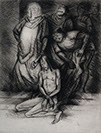

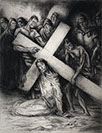
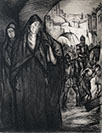

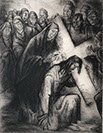
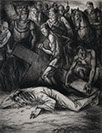
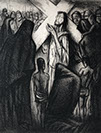
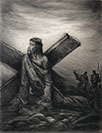
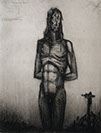



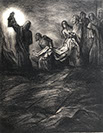
I
Jesus is condemned to Death
II
Jesus accepts the Cross
III
Jesus Falls for the first time
IV
Jesus meets his Mother
V
Simon of Cyrene carries the Cross
VI
Veronica wipes the face of Jesus
VII
Jesus falls the second time
VIII
Jesus meets the Women of Jerusalem
IX
Jesus falls the third time
X
Jesus is stripped of his garments
XI
Jesus is nailed to the Cross
XII
Jesus dies on the Cross
XIII
Jesus is taken down from the Cross
XIV
Jesus is laid in the tomb
1 - 14
<
>


















14
Jesus is Buried, First State
VIII
Jesus meets the Women of Jerusalem, First State
I
Jesus is condemned to Death
First State
IV
Jesus meets his Mother
First State
III
Jesus Falls for the first time
First State
XII
Jesus dies on the Cross
First State
V
Simon of Cyrene carries the Cross, First State
VII
Jesus falls the second time,
First State
XI
Jesus is nailed to the Cross,
First State
3 - 9
<
>
2023
Lent 2023
St. Steven's Episcopal Church
Hilton Head, SC



